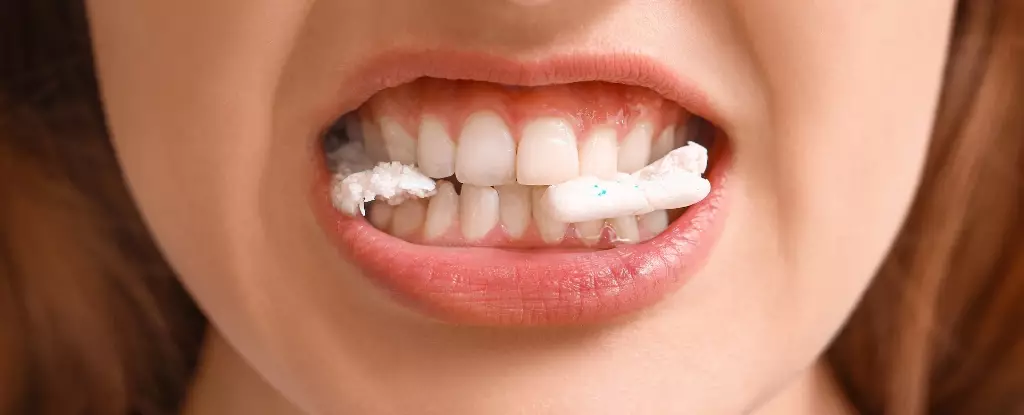In recent years, microplastics have emerged as a major environmental concern, infiltrating ecosystems and human bodies alike. Research conducted by scientists at the University of California, Los Angeles (UCLA) has unveiled another alarming route for these persistent pollutants to enter our systems: chewing gum. Most people associate gum with quick bursts of flavor and stress relief, yet few consider it a potential source of microplastics. This revelation underscores our need to take a closer look at everyday products and the hidden dangers they may contain.
Chewing gum, particularly synthetic varieties, is loaded with petroleum-based polymers that provide its chewy texture. Unfortunately, these polymeric ingredients do not just affect the gum; they also contribute to the growing burden of microplastics in our environment and, potentially, our bodies. The jaw-dropping realization that gum can shed an average of 100 microplastic fragments per gram leads to a startling conclusion: individuals could ingest tendentiously significant amounts of microplastics each year through a habit most of us take for granted.
The Experimental Findings
The UCLA study is still in its infancy, having yet to undergo peer review, but the findings are nonetheless compelling. PhD candidate Lisa Lowe chewed multiple brands of gum and analyzed her saliva, revealing that some brands shed over 600 microplastic particles per piece. This study raises crucial questions about the safety of commonly consumed products and urges us to re-evaluate our understanding of health and consumption.
While it’s important to note that the research does not definitively prove harm from these microplastics, the gravity of the study’s implications cannot be overlooked. With our bodies increasingly inundated by microplastics—found in everything from our lungs to our blood—it’s essential to understand how everyday choices might contribute to this already alarming dilemma.
Prominent figures in environmental science have commented on the potential health ramifications. Although researchers like Oliver Jones from RMIT University reassure consumers that the low quantities of microplastics found may simply pass through the body, it remains unclear what long-term effects—if any—could arise from chronic ingestion of these tiny plastic particles. The existing ambiguity only adds to the unease.
Increased Awareness and Responsible Consumption
The idea that something as trivial as chewing gum could contribute to the microplastic problem should ignite a dialogue about responsible consumption. While some might simply shrug off the findings, the reality is that as a society, we should collectively strive for greater awareness and take responsibility for our habits. Chewing gum may seem harmless, but as researchers continue to uncover the myriad ways microplastics permeate our lives, we must question what part we’ll play in this dilemma.
It’s worth noting the dual impact of chewing gum: not only does it introduce microplastics into our bodies, but improper disposal often leads to littering, contributing to urban pollution. Consider the common sight of gum stains littered across pavements, an unsightly mark left behind by an otherwise innocuous product. Perhaps this issue extends beyond the ingestion of microplastics; it prompts us to reconsider the materials we use and their environmental impact.
The Industry’s Response
In response to the study, the National Confectioners Association defended chewing gum as a long-standing safe indulgence, emphasizing that the ingredients are FDA-approved and have been enjoyed by consumers for over a century. While the reassurance might provide comfort to some, it underscores a clear disconnect between the scientific findings and the industry’s messaging. Consumers deserve transparency regarding the substances in their food, especially when those substances pose potential health risks.
Ultimately, researchers express their desire not to induce panic. Yet, the collective apathy towards microplastics in our environment—and now, our food—should provoke serious concern. If we are to combat this growing issue, we must open our eyes to the implications of our everyday choices. A monumental challenge awaits as we balance our preferences for convenience and enjoyment against the pressing realities of plastic pollution that we cannot afford to ignore.
As we grapple with these revelations, the call for enhanced research, improved product labeling, and greater environmental consciousness has never been more urgent. The hidden truths of chewing gum and microplastics serve as a valuable lesson about the choices we make and their unforeseen consequences on human health and planetary well-being.


Leave a Reply